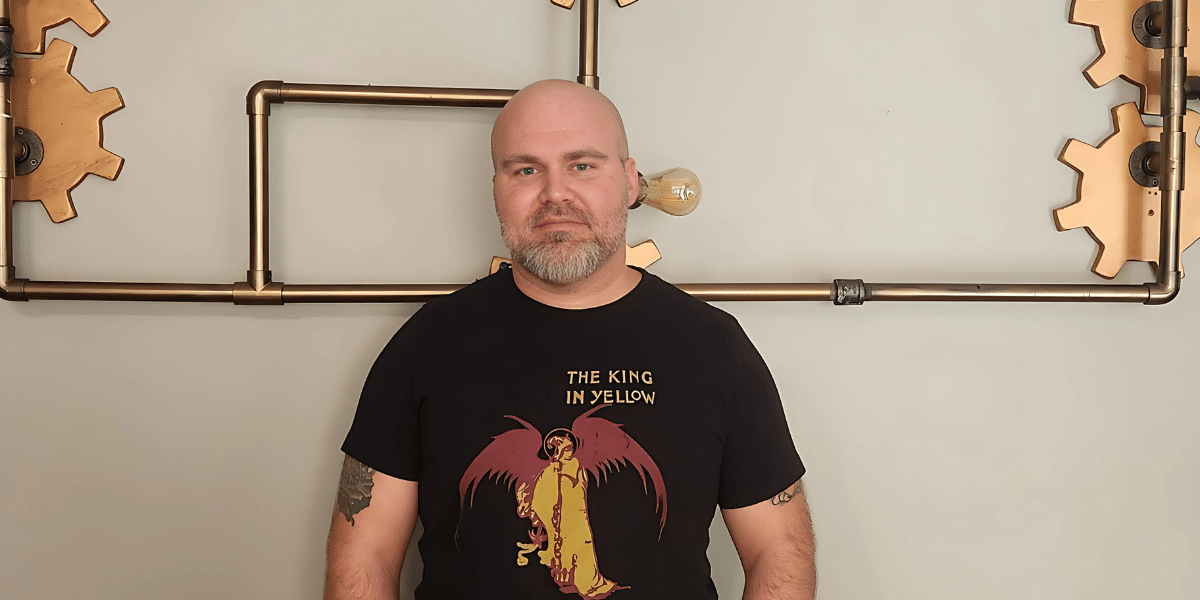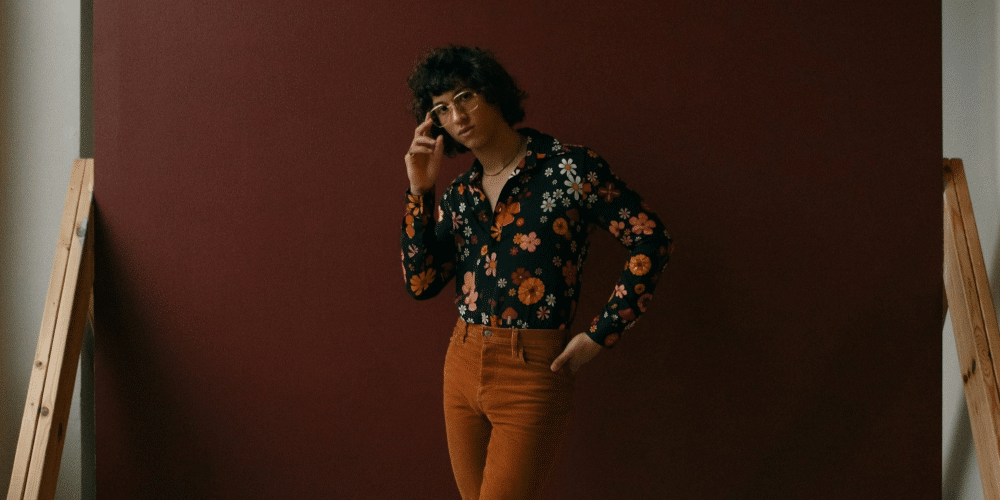Why do they choose a career, and why do women who have abortions mostly need psychological support?
“My job is not to side with those who support or oppose abortion but to remind them that women need support and dialogue.”
1. Overall increase in the number of abortions nationwide
New data released by Guttmacher include several notable trends (see table with abortion rates and rates by state and region):
There were 930,160 abortions in the U.S. in 2020, an 8 percent increase from the 862,320 abortions in 2017.
Similarly, the abortion rate increased from 13.5 abortions per 1,000 women ages 15-44 in 2017 to 14.4 per 1,000 women, an increase of 7%.
In 2020, about one in five pregnancies will end in abortion. More specifically, the abortion rate (the number of abortions per 100 pregnancies) increased from 18.4% in 2017 to 20.6% in 2020, an increase of 12%.
The increase in abortions was accompanied by a 6% decrease in births from 2017 to 2020. Since there were far more births (3.6 million) than abortions (930,000) in 2020, this dynamic means that fewer people got pregnant. Among those who did, a more significant proportion decided to have an abortion.
Between 2017 and 2020, the number of abortions increased in all four regions of the country. The most significant increases were in the West (up 12%) and Midwest (up 10%); the South saw an 8% increase in abortions, and the Northeast saw a 2% increase.
2. Abortion trends across states
Between 2017 and 2020, abortion trends varied from state to state, and there were no clear patterns to explain why some states saw increases or decreases in abortions.
Some states, including Illinois, Mississippi, and Oklahoma, saw significant increases in abortions. Other states, such as Missouri, Oregon, and South Dakota, had significantly fewer abortions in 2020 compared to 2017.
Below, we highlight a few states and offer political contexts that may have influenced recent changes in abortion rates.
New York: The number of abortions increased by 5% from 2017 to 2020, but there were different dynamics over the three years. After a significant increase in 2017-2019, abortions declined by 6% in 2019-2020. New York was one of the first states affected by COVID-19 and one of the most brutal hits. At least 10% of clinics in the state reported that they suspended or stopped providing abortion services in 2020.
In response to the COVID-19 pandemic, various abortion restrictions were imposed at the state level, resulting in lower utilization of services and delayed time for abortion. Other factors related to the pandemic may also have affected the receipt of abortion services, potentially exacerbating existing barriers to care.
Using electronic medical records of all abortions performed at Planned Parenthood League from May 1, 2017, to December 31, 2020 (N=35,411), time series modeling was conducted to estimate monthly changes in the number of abortions compared to expected numbers during the COVID-19 pandemic. It also analyzed whether minors (<18 years of age) had delayed abortions based on gestational age at the time of the procedure and whether minors were affected by the pandemic to varying degrees.
Results showed that from March 2020 to December 2020, there were 1,725 fewer abortions than expected, corresponding to a 20% decrease (95% prediction interval from -2025 to -1394), with 888 fewer abortions among adults (20% decrease), 792 fewer among young adults (20% decrease), and 45 fewer among minors (27% decrease). In adults and young adults, significant reductions in abortions began in March 2020, while in minors, the decline did not start until July 2020. Abortion rates at gestational age ≥12 weeks were unchanged during the COVID-19 pandemic among juveniles (adjusted frequency ratio 0.92; 95% confidence interval 0.55-1.51) and adults (adjusted frequency ratio 0.92; 95% confidence interval 0.78-1.09). Young adults had lower second-trimester abortion rates during the pandemic (adjusted odds ratio, 0.79; 95% confidence interval, 0.66-0.95).
Despite the continued provision of abortion services, the use of abortion services declined markedly during the pandemic. There was no growth in second-trimester abortions in any age group.
The number of abortions in the U.S. jumped 8 percent between 2017 and 2020, the first documented increase after more than three decades of declining demand for the procedure amid improved access to contraception and sex education.
According to a study conducted every few years by the Guttmacher Institute, 930,160 abortions were performed in the first year of the pandemic – up from 862,320 in 2017. The abortion rate – which considers changes in the population – rose 7 percent, from 13.5 abortions per 1,000 women of reproductive age to 14.4 simultaneously.
The number of abortions in the U.S. jumped in 2020, increasing 8 percent over three years.
Covid-19 has led to widespread disruption of Americans’ insurance status, economic stability, mental health, and access to health care, which public health experts say has contributed to increased unprotected sex and record rates of STDs.
At the same time, many low-income Americans lost access to family planning services in 2019 when the Trump administration imposed new restrictions on Title X recipients, causing hundreds of providers to leave the program.
3. The number of abortions in the U.S. has increased, reversing a three-decade-long decline, according to a new report.
The rise in abortions began in 2017, and as of 2020, one in five pregnancies, or 20.6 percent, will end in abortion, according to a report by the Guttmacher Institute. This research organization supports abortion rights. In 2017, 18.4 percent of pregnancies ended in abortion.
The institute, which collects data by contacting every known abortion provider in the country, said the number of abortions would increase to 930,160 in 2020, up from 862,320 in 2017. That number would increase in all country regions: 12 percent in the West, 10 percent in the Midwest, 8 percent in the South, and 2 percent in the Northeast.
The new data have been released as the Supreme Court prepares to issue a decision that could effectively overturn Roe v. Wade, which has made abortion legal in the United States for nearly 50 years. If the court’s final decision is similar to the draft opinion leaked last month, about half of the states are expected to quickly ban or severely restrict abortion, while other states are preparing to expand access for patients from states where abortion is unavailable.
According to the new report, the abortion rate will rise to 14.4 per 1,000 women ages 15 to 44 in 2020 from 13.5 abortions per 1,000 women in that age group in 2017, a 7 percent increase.
4. Financial support from the state for abortion and, above all, psychological help.
These factors will help to avoid many critical cases. Statistically, when a woman experiences an unplanned pregnancy and does not find support from her partner, she is forced to take action; very often, it is an unconsidered desperate act. Abortion funds give more than money.
Brittany Mostiller first learned about abortion funds in 2007.
She was 23 years old, living in a two-bedroom apartment on Chicago’s South Side with her three children: her sister and niece. In February, she had just delivered an unplanned pregnancy to term, which plunged her into depression. The situation worsened in July when she found out she was pregnant again.
“It seemed like everything around me was falling apart,” she says of her life then. “I felt stuck. I wanted something more. I wanted to offer my children something more.”
Mostiller did not have enough money for an abortion, which can cost anywhere from a few hundred to a few thousand dollars, depending on where she lived and how long she was pregnant. At the time, Illinois’ Medicaid program did not cover abortions, which is still the case in 34 states and Washington.
Mostiller went to the nonprofit Chicago Abortion Fund, which covered about a third of the cost of the abortion, which ended up being $900. They sent the money directly to Mostiller’s clinic. Abortion funds often pay only a portion of a client’s abortion, hoping to stretch their limited funds to help as many people as possible.
According to Mostiller, financial support from the abortion fund prevented her from taking the more drastic measures she was considering, such as throwing herself down the stairs or having her 5-year-old daughter pounce on her belly to induce a miscarriage. However, she says, the foundation gave her much more than money.
“I felt like I was really being held by a hand and seen in a way I had never felt before,” she said. “It gave me hope. [Things were hard, and they were like a light.”
Mostiller began volunteering at the Chicago Abortion Foundation and, by 2015, had become its executive director. She is now the leadership development coordinator for the National Network of Abortion Victims Funds.
She said the foundations have prepared for Roe’s downfall since Donald Trump was elected president six years ago.
“Now it’s become a reality,” she said. “They need all the support they can get.”
5. How are new films changing the way we think about abortion?
We see many examples where movies and films about abortion help to reveal new aspects of the topic. For example, it shows the difficulty of choosing a woman who decides to have an abortion because often it is a desperate person in a difficult situation who sees only one outcome of her case – an abortion.
Bridget sits at home on the couch and pops four pills into her mouth, two in each cheek. “I have to keep them there for 20 minutes,” she says, smiling, her cheeks slightly pink. She begins the process of medication abortion. “Do I look pretty?” – she asks Jace, whom she is dating. “I feel pretty.” It is a low-key moment and one of several scenes in the recently released drama “St.
Francis,” which deals with abortion and the complexities of motherhood and womanhood in general with compassion and without stigma.
While several American states have their legal battles over abortion laws, several new independent films take a more casual and quite human approach to depicting the procedure and the decisions that lead to it. The movie “Saint Francis” is not just an abortion story; it is the story of Bridget’s bond with the six-year-old girl she begins babysitting around the same time she terminates her pregnancy. Screenwriter Kelly O’Sullivan, who plays the role of Bridget, partly draws on her experience with abortion in her early 30s. “As I was going through this process, which was very simple and not very scary, I realized that I had been wrongly educated about abortion on television and in movies when I was growing up and growing up,” she tells TIME. “I wanted to write a story that showed abortion without trauma. Its portrayal is ordinary, light, sometimes funny, and very realistic.”
Ramona Edith-Williams and Kelly O’Sullivan in a scene from SENT FRANCES (Oscope Films)
Elise Hittmann’s film “Never, Rarely, Sometimes, Always,” coming out March 13, will also reverse old notions about abortion. Hittmann, who directed the 2017 film “Beach Rats,” was struck by the story of Savita Halappanavar, an Irish resident who died after being denied a life- saving abortion in 2012. Advocates have often cited Halappanawar’s case as an example of why the country’s abortion laws need to change. In May 2018, a referendum resulted in the lifting of a near-total ban on abortion. “I started reading about women traveling from Ireland across the Irish Sea to London and back in one day, and I thought: this is an untold story,” Hittmann tells TIME.
Never Rarely, Sometimes Always takes this journey to the United States, where access in rural areas is more limited than in urban centers, and laws vary from state to state. Faced with several obstacles to abortion in Pennsylvania because she is a minor, teenager Autumn (Sidney Flanigan) decides to travel to New York for a surgical abortion at Planned Parenthood. First, Autumn visits an unnamed crisis pregnancy center in her hometown, where an ultrasound technician, detecting a fetal heartbeat, tells her: “That’s the most magical sound you’ve ever heard.” She is sent home with brochures about adoption, but the center’s staff does not explain that abortion is an option for her, and she later learns that they misled her about her gestational age. “It was important for me to let viewers know such centers exist. They are controversial because they are federally funded but not medically licensed,” Hittmann says.
6. Partners – Abortion and Men
My upcoming film, “Sacrifice,” is about the problem of dialogue between partners. A woman is most vulnerable when she has to choose between her career and her child; sometimes, a woman is afraid to talk about her pregnancy for different reasons; it can be fear, pressure from her partner, pressure from her parents, religious beliefs, fear of not being realized, fear of being alone and raising a child without financial help. The main idea of my script and the future film is support and dialogue. The heroine of my story, under pressure from many factors, including her career, decides to have an abortion, hiding it from her partner. My position as an author, artist, and woman is to share even the worst ideas with my partners before doing anything. Of course, the woman’s body is her right, and she has the most significant responsibility for the potential child’s future. However, the man-if it is a couple of people in a long-term relationship-must who trust each other and make the decision together. Of course, every situation in which a woman decides to have an abortion is unique and unlike any other, but my film “Sacrifice” will help many potential mothers in the United States to understand; most of them will indeed find support if they are open to dialogue with their partners. Along with government support, couples who do decide to have an abortion for whatever reason will be able to do so safely for the woman’s life since statistics show that unprofessional, illegal – hidden abortions can be harmful to a woman’s health.
By law, the final decision on whether or not to have an abortion is up to the woman. We understand that many partners are involved in this decision, so we involve them as much as possible in the abortion counseling and treatment process. We must balance partner involvement and preserve the dignity and privacy of other patients in our clinics.
If you and your partner are considering this option, there are many things you can do to help her. First, let her talk about it if she wants to, and ensure she gets adequate and supportive advice.
The decision to have an abortion is not always easy.
Second, if or when your wife or partner does decide to have an abortion, advise her to seek advice as soon as possible. In the UK, there are limits (24 weeks of pregnancy) on when a woman can have an abortion. Furthermore, the earlier the abortion is performed, the less complicated the procedure.
Finally, after the abortion, your partner may want to talk about it. Alternatively, she may not want to. It would be best if you gave her support and care so that you can move on with your life and think about the future, including safe contraception.
7. Male involvement in abortion is significant
Men’s involvement in abortion is significant, intersecting with individual, societal, and macro factors that shape how abortion-related care is provided. This review presents data from low- and middle-income countries on men’s participation in abortion. A search of five databases using search terms yielded 7,493 articles published in English between 01/01/2010 and 12/20/2019.
Thirty-seven studies met the inclusion criteria for articles about male involvement in women’s abortion and were summarized using the abortion-related care search engine. Most studies were conducted in sub-Saharan Africa and were qualitative. The data indicated that male involvement was significant and determined a woman’s or girl’s ability to disclose her pregnancy or decision to have an abortion. Men as partners were particularly influential in controlling the resources needed to access abortion and giving or withholding support for abortion. Denial or refusal of paternity was a critical point in the abortion trajectory of many women. Men’s involvement in the abortion trajectory can be both direct and indirect. Contextual realities can make men’s participation in abortion a necessity rather than a choice. The impact of men’s involvement (lack of) undermines a woman or girl’s autonomy regarding abortion and determines the context in which abortion providers can access care. This review demonstrates the need to understand better the mechanisms, reasons, and intentions underlying male involvement, with a focus on the abortion provider.
21% is the estimated increase in pregnancy-related deaths in the second year of the nationwide abortion ban in the United States.
8. Family Finances and Abortion
Statistics show that the number of abortions in the U.S. has increased because of the Coronavirus pandemic in 2020 and specific laws. All of these factors have affected the financial condition of American citizens. Hence, a woman who decides to have an abortion is not only because of her career and the support of her partner but also mainly because of the government’s financial support.
Many low-income Americans lost access to family planning services in 2019 when the new restrictions on Title X recipients caused hundreds of providers to leave the program.
In addition, some of the growth can be attributed to steps several states have taken over the past few years to expand abortion access. Illinois and Maine, for example, have allowed Medicaid to pay for the procedure, while other states have passed laws requiring private insurance companies to cover abortions.
“Most people who have abortions are poor or low-income, and this coverage means that many who otherwise could not afford abortions can get medical care,” the Guttmacher report noted.
While more than two dozen states have imposed abortion restrictions during the same time — including waiting periods and restrictions on the distribution of abortion pills — may have been blocked by the courts. Moreover, because these states already had limited access to the procedure, the report’s authors believe these new laws had less impact than those that expanded access to abortion.
Some states that have been most aggressive in restricting abortion have seen the most significant increases, including Mississippi and Oklahoma. The report’s authors suggest that as neighboring states adopted more restrictions, more residents went to Mississippi’s only clinic instead of another state.
The report comes shortly before the U.S. Supreme Court is expected to rule to overturn Roe v. Wade, a decision that would allow dozens of states to impose a near-complete ban on the procedure. Guttmacher argues that the new data show that the court’s decision could have a more significant impact than previously known, forcing hundreds of thousands of people who want the procedure to cross state lines yearly, terminate pregnancies illegally, or carry unwanted pregnancies to term.
Anti-abortion groups have used the new data to attack Democrats who advocate abortion rights as “extremists.”
“Leading Democrats used to say that abortion should be ‘safe, legal and rare.’ Now the Biden administration and Democrats in Washington are promoting abortions on demand before birth, paid for by taxpayers — including dangerous mail-order abortion drugs — and governors of states like California and New York are seeking to make their states ‘sanctuaries’ and ‘safe harbors’ for the abortion industry,” SBA Pro-Life America President Marjorie Dannenfelser said in a statement to POLITICO. “The pro-life movement must continue to educate Americans, and pro-life lawmakers at both the state and federal levels must be as ambitious as possible in reaching consensus. Millions of lives are at stake.”
9. Respect and psychological support for would-be mothers who choose to have an abortion, a kind of instance to help detail and possibly help prevent abortions.
Psychosocial Factors and Pre-Abortion Psychological Health: The Importance of Stigma
Most studies in mental health and abortion have examined factors related to psychological health after abortion. However, studies of women following abortions from start to finish consistently show that symptoms of depression, anxiety, and stress are highest immediately before abortion compared to any period after that.
Objectively
This finding suggests the need for research on psychosocial factors related to mental health before abortion.
Methods
This study uses data from 353 women undergoing abortion at three community reproductive health clinics to examine psychological health predictors before an abortion. Drawing on three aspects of the abortion and mental health literature: general risks, stress, and coping, and sociocultural context, we conducted a multivariate analysis to examine the influence of essential factors on symptoms of depression, anxiety, and stress immediately before an abortion, including sociodemographic data, abortion characteristics, adverse childhood factors, recent adversity in sexual partner relationships, relationship context, desire for future pregnancy, and perceived abortion stigma.
Results
Adverse childhood and partner factors, including reproductive coercion, were associated with adverse mental health symptoms and perceived abortion stigma. Before model inclusion, abortion-related stigma explained 18.6%, 20.7%, and 16.8% of the variance in symptoms of depression, anxiety, and stress, respectively. The perceived stigma of abortion explained another 13.2%, 9.7%, and 10.7% of the variance in symptoms of depression, anxiety, and stress before an abortion.
Conclusion
One of the first to consider pre-abortion mental health as an outcome, this study suggests that eliminating stigma among women seeking abortion can significantly reduce their psychological distress.
10. There are many controversies and court cases in the U.S. about legalizing or banning abortion.
My job is not to side with those who support or oppose abortion but to remind them that women need support and dialogue. I can voice my opinion and help them with my art. My new project is the movie “Sacrifice.”
Read more about “Sacrifice. “
Short Description
Ambitious actress Rebecca is struggling to conquer Hollywood, and she lives modestly with her boyfriend Alex in a trailer waiting for fame. After years of waiting and failure, Rebecca finally receives a generous offer to star in a TV series, but she also knows she is pregnant and faces a difficult choice.
The film is about a strong woman who has to make difficult choices.
The film’s plot helps to understand how difficult it is for an ambitious woman to choose between family and self-actualization. The film’s main idea is to show that with kindness and support. It is possible to overcome all difficulties. There is nothing more valuable than family values.
Storyboard
Rebecca is under intense pressure from her boyfriend, Alex, and her mother. Alex does not accept abortion and tries to convince his girlfriend of this terrible idea.
Rebecca realizes that if she misses an incredible opportunity and gives up the lead role now, her life will change forever with the baby’s birth. She is terrified that she will have to spend her life in a trailer with children and unrealized dreams, and she decides to have an abortion without saying anything to Alex.
Having achieved success in Hollywood, Rebecca realizes she can no longer hide what she has done and tells Alex everything. Alex tries to leave Rebecca but realizes he still loves her. He sees Rebecca’s desperation and supports her by staying by her side.
Main Characters Gabriela Kostadinova
Gabriella Kostandinova, an accomplished actress who has played in over 30 Hollywood films, has confirmed her involvement in “Sacrifice.” Gabriella will play the role of Rebecca. Her character is a robust and determined actress. She sacrifices a lot for her cause. Acting for her is the primary purpose of life. She is used to controlling everything and does not want to give up until she finds out she is pregnant.
Allen Williamson
Allen Williamson, an actor in over 40 film projects, has already agreed to participate in the movie “Sacrifice.” Allen will play Alex, a computer programmer who is endlessly in love with his girlfriend and dreams of having children. He has few friends and spends all his free time helping and supporting Rebecca, but Alex gradually presses on Rebecca through his help and fantasies about family life. It is an exciting experience for Allen to play the withdrawn, jealous, and intrusive, in-love Alex.
Scriptwriter and director Anatoly Kornilov
Anatoly Kornilov (aka Tony Kornilov) is the writer and director of the film.
Anatoly graduated from the most vital film school in St. Petersburg, Russia. Anatoly has extensive experience making social dramas, such as “A.U.E.” about teen gangs with 8 million views on YouTube, and “Chalk Circle” about the problems of adopting children.
Anatoliy Kornilov’s films have repeatedly won various nominations at international film festivals.
Director of photography.
Steven Shulgach
Steven Shulgach is a talented cinematographer and founder of Sinegach Studios, who is actively involved in the visual design and preparatory period of “Sacrifice.”
Stephen will serve as the cinematographer-director. His experience in short films, shadowing, and artistic freedom will allow Stephen to realize the most creative ways of shooting.
Production Designer Jessica Marie Cole
Jessica Marie Cole has accepted an invitation to participate in “Sacrifice” and is currently developing the artistic concept, acting environment, interiors and exteriors, and location choices for filming.
Jessica is an experienced product designer and has worked on major Disney projects, short films, and independent indie films.
Composer Marius Feder
When Marius Feder read the script, he immediately said he wanted to write the music for the short film Sacrifice.
Marius is a successful composer who has written music for such films as “Shang Chi,” “The Legend of the Ten Rings,” and “You People,” Marius also writes music for such famous performers as Huser and Kendrick Lamar. Recently, along with Kendrick Lamar, Marius received a Grammy nomination.
Locations
The main action of Sacrifice takes place in an old trailer on wheels and next to a trailer on the beach by the ocean. In specific lighting, the cramped space of the trailer psychologically pressures the characters or creates comfort, while the expansive ocean views show a positive perspective.
Promotion Strategy
Together with the film festival promotion platform Festhome.com, we analyzed the “Sacrifice” script and developed a promotion strategy for significant film festivals where such social themes as abortion are most famous for viewing.
We plan to send the finished film to such festivals as:
Sundance Film Festival. Utah/USA
ACT Human Rights Film Festival. Colorado/USA This Human World. Vienna/Austria
New York Film Festival
Tribeca Film Festival. New York/USA
Palm Springs Film Festival. California/USA Los Angeles Film Festival. California/USA Cucalore Film Festival. California/USA
Ashland Independent Film Festival. Oregon/USA Florida Film Festival
Boston IFF. Massachusetts/USA
Beaufort International Film Festival. California/USA Citizen Jane Film Festival. Missouri/USA
Toronto International Film Festival. Canada
11. Why is this film important now?
Of course, there can be different reasons for abortion, but my story will help you to feel ambitious and robust as a woman, not only to cope with difficult choices.
My film will help you look at the problem of abortion from a different perspective. It will help women understand they are not alone; they can cope with all the difficulties. Do not keep silent; partners will hear them. I encourage women to dialogue with their men as often as possible.
Sources:
https://www.guttmacher.org/article/2022/06/long-term-decline-us-abortions-reverses- showing-rising-need-abortion-supreme-court
Abortion Reporting: Connecticut (2018) – Lozier Institute abortion_provider_census_2020_topline.xlsx (live.com)
The impact of the COVID-19 pandemic on abortion care utilization and disparities by age – PMC (nih.gov)
https://www.guttmacher.org/article/2022/06/long-term-decline-us-abortions-reverses- showing-rising-need-abortion-supreme-court
https://www.nytimes.com/2022/06/15/health/abortion-rate-increase.html
https://www.npr.org/sections/health-shots/2022/07/25/1112938261/the-role-of- independent-funds-to-help-people-access-abortion-is-growing
https://time.com/5799385/abortion-onscreen-representation/
https://www.bpas.org/abortion-care/supporting-someone-having-an-abortion/partners/
https://www.ncbi.nlm.nih.gov/pmc/articles/PMC8956302/
https://www.politico.com/news/2022/06/15/us-abortions-increase-2020-roe-wade- 00039452
https://www.colorado.edu/asmagazine/2021/09/22/study-shows-abortion-ban-may-lead- 21-increase-pregnancy-related-deaths







